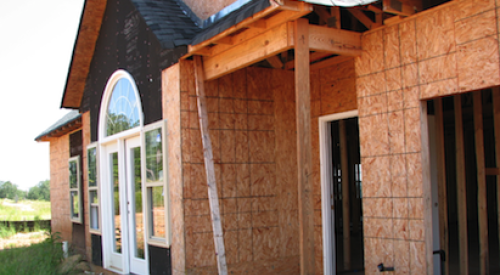| Dean Horowitz, Publisher |
As builders continue to improve construction practices, there is the opportunity for something fantastic to occur - the consumer's expectation for a quality-built home to be realized and become the established norm.
This summer, a couple of builders told me how they used to believe that their ideas were proprietary, that when employees left, they took company secrets with them. As a defense, these builders had limited their employees' access to information and training. What better protection than to have no one really know company standards and policies? They agreed this approach seemed funny over time, and in abandoning the bunker mentality, their companies changed for the better.
Any builders can implement the same great ideas. The difference between builders comes from how well those ideas are implemented and the reputation that is formed as a result.
So if all builders can build equally great homes, what will a builder's brand represent in the marketplace? "I build as good a home as any other builder" is not a compelling tag line.
What we're driving toward is the means to achieve market differentiation by representing a distinct set of values. Professional Builder has been behind green building because it presents a terrific opportunity to offer a different kind of product. Design and community development have been traditional means to differentiate as well. Remember Jack Nicklaus golf communities?
As said before, your brand is more significant than any building product manufacturer's to a new home buyer. But there is an opportunity to leverage another company's brand as a means to solidify your own.
Consider Volkswagen's new Beetle advertisements. The Beetle represents great, unique design. It's about individuality. This is the same position Apple taps into with its iPod. They cleverly teamed up to provide Beetles with an iPod installed. Both brands work together to demonstrate they are different.
Many other non-building companies have partnered to create a more dominant niche market position. From laptop computers to fast food, co-branding can be extremely effective. As you consider the homes you build, have you also considered what products have a similar value structure as yours? Could market promotions include these similar brands?
Now swing back to building product manufacturers. Fewer than a dozen have strong consumer branding strategies. Many brands are associated with building products, but only a few have established category leadership, brands strong enough to drive home sales.
By co-branding with one of these companies, you could differentiate your homes as the leaders in no-maintenance exteriors, incredible kitchens or warm flooring. Another alliance could be with a retailer. Great sound systems, wired houses, the ultimate basement shop or a mechanic's garage for the car enthusiast. How about a weekend getaway for the homeowners at a Westin to align with your fantastic bedroom niche?
As your company evolves, your brand only gets stronger. Its power is more meaningful than your homes' individual components. Now is the time to select that other brand, be it a building material that sets you apart or a retail product that reinforces what you are as a home builder. This additional power behind your company could fuel your sales.











